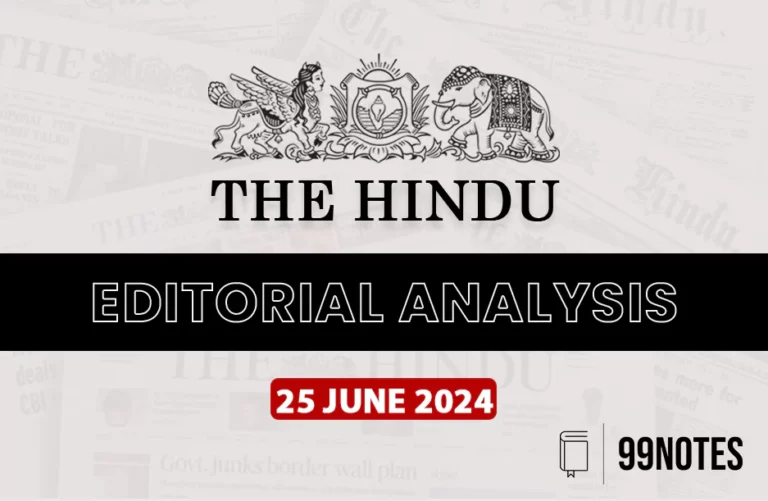30 November 2024 : Indian Express Editorial Analysis
1. Everywhere the same song
(Source: Indian Express; Section: The Ideas Page; Page: 13)
Topic: GS3 – Environment
| Context: |
| The article highlights the severe air pollution crisis in India and its neighboring regions, emphasizing the urgent need for collective action to address this shared environmental and public health catastrophe. |
Escalation of Air Pollution to Unimaginable Levels
- India’s capital, New Delhi, has once again become the center of attention due to its life-threatening air pollution levels.
- Air quality has reached “severe plus” levels, with readings as high as 50 times beyond the World Health Organization’s (WHO) safe limit.
- The Air Quality Index (AQI) peaked at a staggering 491 on a scale of 500, reflecting a crisis that has disrupted daily life, including visibility-dependent services like flights and trains.
- Such extreme pollution levels have turned the city into an almost uninhabitable zone, pushing the boundaries of human tolerance and the predictive frameworks established by global health standards.
Health and Development Consequences
- The impact of such sustained exposure to toxic air is catastrophic. Air pollution is already a leading cause of premature deaths in India, accounting for over two million fatalities annually.
- It exacerbates chronic conditions like heart and lung diseases, impairs brain development, and threatens long-term public health on an unprecedented scale.
- This environmental challenge also undermines India’s ability to achieve the Sustainable Development Goals, further compounding societal inequalities as vulnerable populations bear the brunt of the crisis.
Root Causes and Mitigation Efforts
- The primary culprits include industrial emissions, vehicular pollution, agricultural stubble burning, and the reliance on coal and firewood for cooking and heating.
- While winter weather exacerbates the problem by trapping pollutants close to the ground, the crisis is fundamentally man-made.
- Efforts such as introducing clean cooking fuels like LPG and transitioning public buses in New Delhi to compressed natural gas (CNG) have shown promise but remain insufficient.
- Current responses, focused on emergency measures reminiscent of pandemic lockdowns, fail to address the chronic and structural nature of the problem.
Failures in Governance and Accountability
- The recurring nature of this crisis highlights a deep failure in governance and regulatory enforcement.
- Despite decades of litigation and activism, the state and its regulatory authorities have been unable to implement pre-emptive actions.
- The privileged classes often escape immediate effects through air filtration systems or relocating to cleaner areas, leaving the poor and working-class populations disproportionately affected.
- This systemic inequity underscores the urgent need for comprehensive and inclusive policy responses.
A Regional and Collaborative Approach
- Air pollution is not confined to Delhi or even India. It affects the entire South Asian subcontinent, impacting over half a billion people from Pakistan’s Punjab to northern India and Bangladesh.
- This shared crisis demands regional cooperation, transcending political boundaries and historical conflicts.
- Satellite imagery starkly illustrates the interconnectedness of environmental challenges, emphasizing the futility of localized efforts without cross-border solidarity.
- Addressing air pollution collectively could foster regional trust and cooperation, paving the way for resolving broader geopolitical issues.
The Need for Unity Against a Common Foe
- The crisis presents an opportunity for South Asian nations to unite against a shared existential threat.
- History shows that adversaries can find common ground in the face of greater challenges, and environmental degradation is a unifying concern devoid of historical baggage.
- By tackling air pollution collaboratively, nations can demonstrate mutual respect and lay the groundwork for addressing more contentious issues.
- The fundamental truth remains: the air we breathe connects us all, underscoring our shared responsibility to protect it for future generations.
| Measures Taken to Control Air Pollution in India |
|
To control air pollution in India and minimise its impacts, the Government of India has taken the following measures:
|
| PYQ: Describe the key points of the revised Global Air-Quality Guidelines (AQGs) recently released by the World Health Organisation (WHO). How are these different from its last update in 2005? What changes in India’s National Clean Air Programme are required to achieve these revised standards? (150 words/10m) (UPSC CSE (M) GS-3 2021) |
| Practice Question: Discuss the causes and consequences of air pollution in India, with a focus on its regional and transboundary impacts. Suggest long-term policy measures to mitigate this environmental crisis while fostering regional cooperation in South Asia. (250 words/15 m) |





